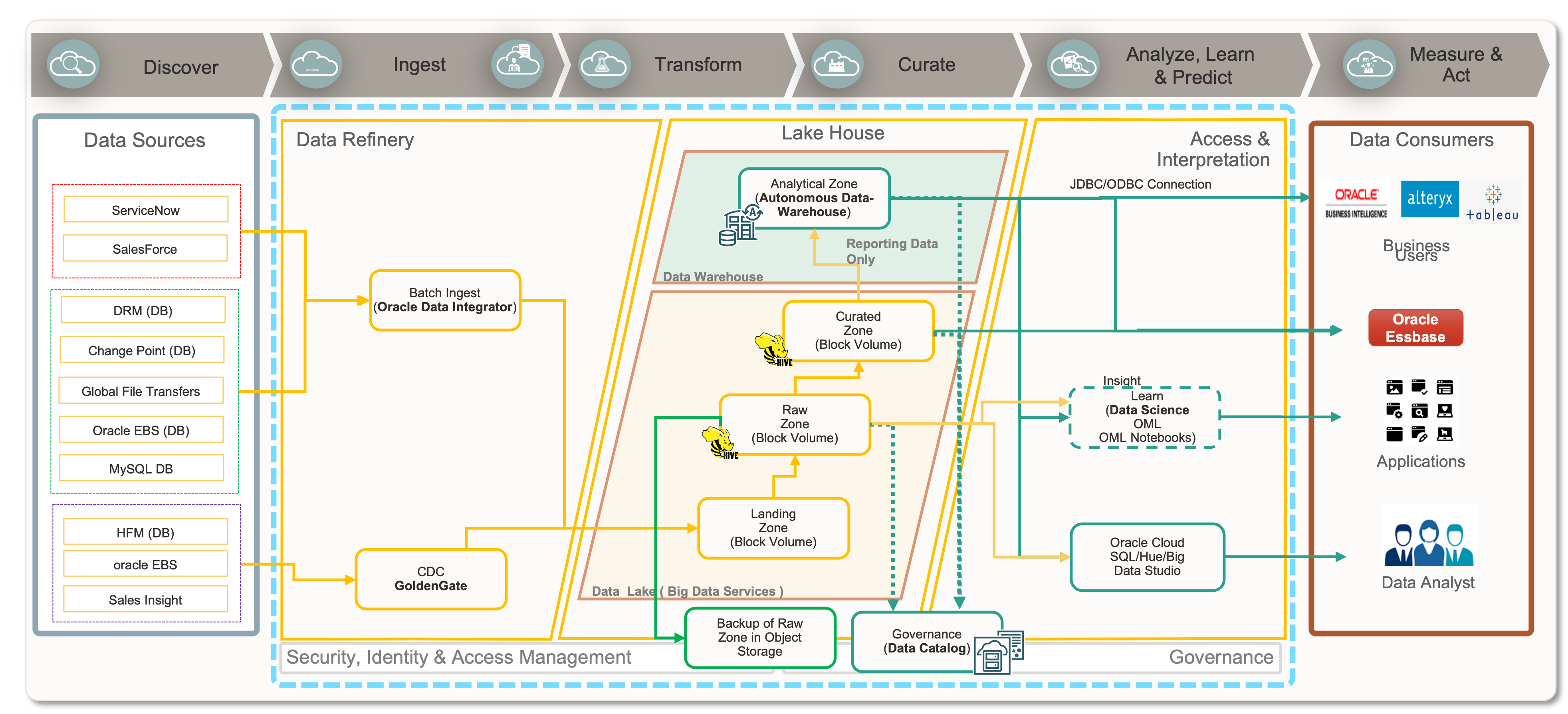In previous posts, we covered the concepts and four architectures to build a modern data platform. Now, we’re wrapping up this series by looking at three companies that successfully implemented Oracle solutions. Each company is unique—different technologies and even different clouds—but all of them reached their goals.
Lyft on Autonomous Database
Lyft, the transportation network, is busy reimagining the future of transportation. Behind the scenes, though, the company had gone from a high-growth startup to a publicly traded enterprise processing billions of transactions a year, and its finance systems hadn’t kept up. It was running about 30 systems that were siloed, costly to maintain, and inefficient. They didn’t provide the timely information that a fast-growing business needs to make decisions. Lyft chose Oracle Database Platform that we presented, with Oracle Autonomous Database as the data platform. They benefited from its built-in integration with their Oracle Fusion Cloud Enterprise Resource Planning (ERP) and Oracle Analytics Cloud.

Following the implementation, Lyft closes their financial books faster and allows more stakeholders access to centralized data, including meaningful visualizations that lead to better business decisions.
Bionime on MySQL Heatwave on AWS
Bionime’s vision is to provide diabetes patients with peace of mind through self-monitoring blood glucose systems that help them accurately manage and control their health.
The medical device manufacturer’s analytics service was built around Amazon Web Serviced (AWS) Relational Database Service (RDS) and wasn’t performing for the large amount of data needed to provide accurate and up-to-date glucose monitoring for patients. Bionime sought a faster data platform that would support its existing technologies.
Bionime selected Oracle MySQL HeatWave on AWS for a fully managed database service that combines transaction processing with an in-memory query accelerator for a high-performance analytics engine. MySQL HeatWave eliminated the need for a separate analytics database and extract, transform, load (ETL) processes. Real-time analytics helps Bionime accelerate the development of its glucose monitoring systems but with less database administration. Bionime has seen improvements of 50-times faster resolution of complex queries compared to AWS RDS.
Experian using managed open source services
With almost 18,000 employees in over 40 countries, Experian manages the credit history data on 1.3 billion individuals and 166 million businesses across the globe. They needed an open data platform with open source products and services to build vast data pipelines and process large amounts of data, including real-time events. The company wanted to unify critical data and analytics from on-premises data centers, co-location facilities, and cloud providers onto a single lakehouse architecture. Experian also had a significant investment in relational databases that needed to be integrated. To accomplish all this, Experian chose the managed open source for big data platform.
They migrated open source workloads on Spark and Hadoop from other cloud providers to Oacle Cloud Infrastructure (OCI) Big Data and OCI Data Flow services without requiring reengineering or rearchitecting, which contributed to significant cost and time savings. Experian’s success in the migration to OCI Lakehouse was also supported by Oracle Cloud Lift Services, which provided guidance on planning, architecting, and prototyping to help deliver immediate value.

With this architecture in place, Experian saw a 40% increase in performance, a 60% reduction in costs, and increased reliability and resilience.
Conclusion
We started this series by observing that data is key to business success; Lyft, Bionime, and Experian are only a few examples. They apply Oracle’s commitment to customers to meet you where you are in your journey to the cloud, ensure portability across deployment options, and avoid vendor lock-in.

We believe that the Oracle Data Platform is uniquely positioned to enable you to achieve success with your data with the following capabilities:
-
Combine transactional and analytical data and avoid siloes
-
Use OCI, Oracle software as a service (SaaS), or any amount in between. You select the amount of control
-
Bring any kind of data to the platform, and we provide tools to help you do it. You can also use your own!
-
Explore the power of OCI and other clouds. We meet you where you are.
-
Use leading Oracle Analytics Cloud reporting or any third-party analytical application. OCI is open!
Want to learn more? Try Oracle Cloud Infrastructure for free, experiment with guided hands-on LiveLabs, and move your load with the support of Oracle Cloud Lift Services.
Explaining Modern Data Management Part 1
Explaining Modern Data Management Part 2

